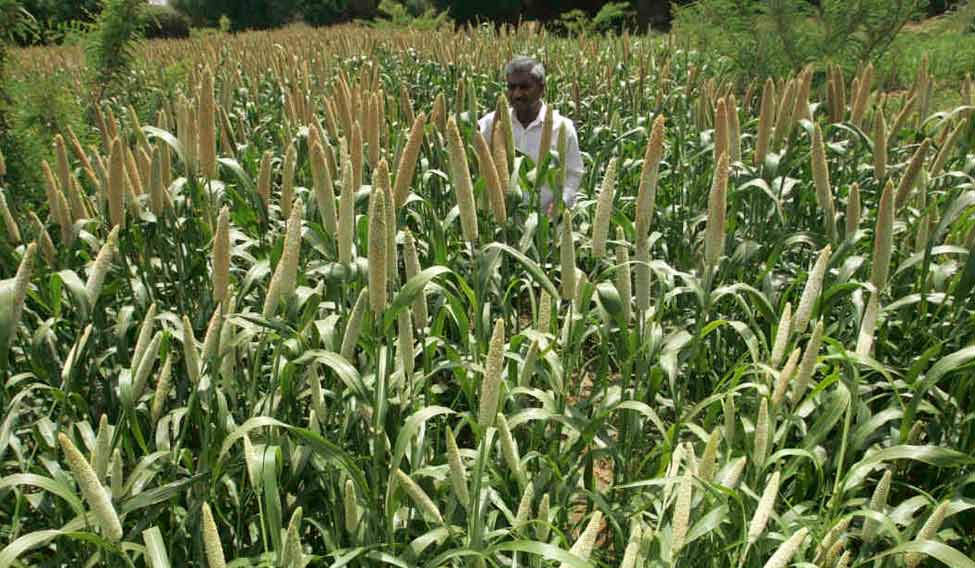It's been known for some time that the humble millets, relegated to the edge of the farms, those corners which get neither water nor enough fertiliser, are actually wonder crops. Loaded with a whole pack of power nutrients—calcium, vitamins, iron, and, to cater to a recent fad, surprisingly gluten free, millets are praised to the high heavens by nutritionists, farm activists, climate change worriers and even the medical community.
Putting them on this virtuous pedestal, however, has done only that much to the fortunes of millets. Though still considered the poor man's cereal, they sit in the fancy shelves of organic stores, with heavy price labels. But the large middle class, the target of every market, remains out of the millet ambit.
All this might set to change with the state of Karnataka having taken up the role of the millet crusader, and its agriculture minister Krishna Byre Gowda leading this crusade. The state is hosting an international trade fair on organics and millets. Millets in India are largely organic, given that they are neglected crops with little investment in their agriculture, said Gowda. For starters, Gowda, who is at the forefront of a request to the United Nations to declare an International Year of Millets, says that this group of ancient cereals need to be renamed, from coarse cereals, as agriscientists call them, to nutricereals.
The fair aims at popularising millets among the majoirty (not too tough, given that millets eased out of daily diets only around three decades ago, as India, seeking food security, upped the cultivation of wheat and rice.) Populsarising, however, only goes that far. So the Karnataka government, which began working on millet revival around three years ago, is offering a platform for developers who want to build machinery for dehusking and pounding these grains. It will also showcase efforts afoot to make millets user-friendly in urban homes, packaged products like bajra cookies, ragi breakfast cereal and mixed millet muesli.
There are issues with millets, which Gowda feels, an investment in research and development could take care of. For instance, per hectare yields in unirrigated fields are one tonne, with irrigation upping the yield to about six tonnes. This compares poorly with wheat and rice yields. Moreover, millet flour doesn't stay for long as rice and wheat do, so shelf life becomes a major issue. International Crop Research Institute for Semi Arid Tropics (ICRISAT) is working on sequencing the genetic code of ragi and jowar. “Once that is done, scientists can develop marker assisted breeding for high yielding varieties,'' Gowda said.
The Karnataka government wants to boost millet use in every niche. It wants millets to be part of the Public Distribution System and school mid-day meals. It wants millets to get fancy at high end restaurants and kitty circles, replacing the imported quinoa. And most importantly, it is targetting for millets to return to middle class homes in modern avatars, becoming the universal ingredients for cutlet binding, breakfast cereal and even cake baking.






